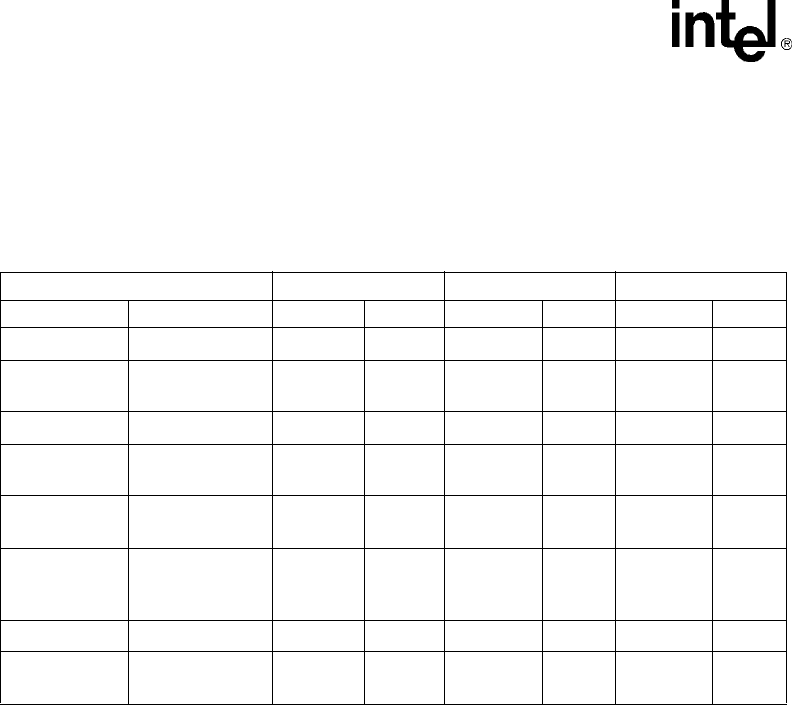User's Manual
Table Of Contents
- Contents
- Figures
- Tables
- Revision History
- About This Publication
- 1. Product Description
- 2. Programming Models
- 3. Device Handling
- 4. Event Handling
- 5. Error Handling
- 6. Application Development Guidelines
- 7. Call Progress Analysis
- 7.1 Call Progress Analysis Overview
- 7.2 Call Progress and Call Analysis Terminology
- 7.3 Call Progress Analysis Components
- 7.4 Using Call Progress Analysis on DM3 Boards
- 7.5 Call Progress Analysis Tone Detection on DM3 Boards
- 7.6 Media Tone Detection on DM3 Boards
- 7.7 Default Call Progress Analysis Tone Definitions on DM3 Boards
- 7.8 Modifying Default Call Progress Analysis Tone Definitions on DM3 Boards
- 7.9 Call Progress Analysis Errors
- 7.10 Using Call Progress Analysis on Springware Boards
- 7.11 Call Progress Analysis Tone Detection on Springware Boards
- 7.12 Media Tone Detection on Springware Boards
- 7.13 Default Call Progress Analysis Tone Definitions on Springware Boards
- 7.14 Modifying Default Call Progress Analysis Tone Definitions on Springware Boards
- 7.15 SIT Frequency Detection (Springware Only)
- 7.15.1 Tri-Tone SIT Sequences
- 7.15.2 Setting Tri-Tone SIT Frequency Detection Parameters
- 7.15.3 Obtaining Tri-Tone SIT Frequency Information
- 7.15.4 Global Tone Detection Tone Memory Usage
- 7.15.5 Frequency Detection Errors
- 7.15.6 Setting Single Tone Frequency Detection Parameters
- 7.15.7 Obtaining Single Tone Frequency Information
- 7.16 Cadence Detection in Basic Call Progress Analysis (Springware Only)
- 8. Recording and Playback
- 8.1 Overview of Recording and Playback
- 8.2 Digital Recording and Playback
- 8.3 Play and Record Functions
- 8.4 Play and Record Convenience Functions
- 8.5 Voice Encoding Methods
- 8.6 G.726 Voice Coder
- 8.7 Transaction Record
- 8.8 Silence Compressed Record
- 8.9 Recording with the Voice Activity Detector
- 8.10 Streaming to Board
- 8.11 Pause and Resume Play
- 8.12 Echo Cancellation Resource
- 9. Speed and Volume Control
- 10. Send and Receive FSK Data
- 11. Caller ID
- 12. Cached Prompt Management
- 13. Global Tone Detection and Generation, and Cadenced Tone Generation
- 13.1 Global Tone Detection (GTD)
- 13.1.1 Overview of Global Tone Detection
- 13.1.2 Global Tone Detection on DM3 Boards versus Springware Boards
- 13.1.3 Defining Global Tone Detection Tones
- 13.1.4 Building Tone Templates
- 13.1.5 Working with Tone Templates
- 13.1.6 Retrieving Tone Events
- 13.1.7 Setting GTD Tones as Termination Conditions
- 13.1.8 Maximum Amount of Memory for Tone Templates
- 13.1.9 Estimating Memory
- 13.1.10 Guidelines for Creating User-Defined Tones
- 13.1.11 Global Tone Detection Application
- 13.2 Global Tone Generation (GTG)
- 13.3 Cadenced Tone Generation
- 13.3.1 Using Cadenced Tone Generation
- 13.3.2 How To Generate a Custom Cadenced Tone
- 13.3.3 How To Generate a Non-Cadenced Tone
- 13.3.4 TN_GENCAD Data Structure - Cadenced Tone Generation
- 13.3.5 How To Generate a Standard PBX Call Progress Signal
- 13.3.6 Predefined Set of Standard PBX Call Progress Signals
- 13.3.7 Important Considerations for Using Predefined Call Progress Signals
- 13.1 Global Tone Detection (GTD)
- 14. Global Dial Pulse Detection
- 14.1 Key Features
- 14.2 Global DPD Parameters
- 14.3 Enabling Global DPD
- 14.4 Global DPD Programming Considerations
- 14.5 Retrieving Digits from the Digit Buffer
- 14.6 Retrieving Digits as Events
- 14.7 Dial Pulse Detection Digit Type Reporting
- 14.8 Defines for Digit Type Reporting
- 14.9 Global DPD Programming Procedure
- 14.10 Global DPD Example Code
- 15. R2/MF Signaling
- 16. Syntellect License Automated Attendant
- 17. Building Applications
- Glossary
- Index

54 Voice API Programming Guide — June 2005
Call Progress Analysis
Table 5 shows default tone definitions for SIT sequences used on DM3 boards. The values in the
“Freq.” column represent minimum and maximum values in Hz. “Time” refers to minimum and
maximum on time in 10 msec units; the maximum off time between each segment is 5 (or 50
msec). The repeat count is 1 for all SIT segments. N/A means “not applicable.”
The following considerations apply to SIT sequences on DM3 boards:
• A single tone proxy for the dual tone (also called twin tone) exists for each of the three
segments in a SIT sequence. The default definition for the minimum value and maximum
value (in Hz) is 0. For more information on this tone, see Section 7.8.4, “Rules for Using a
Single Tone Proxy for a Dual Tone”, on page 59.
• These tone IDs have aliases:
– TID_SIT_NO_CIRCUIT (TID_SIT_NC)
– TID_SIT_OPERATOR_INTERCEPT (TID_SIT_IC)
– TID_SIT_VACANT_CIRCUIT (TID_SIT_VC)
– TID_SIT_REORDER_TONE (TID_SIT_RO)
– TID_SIT_NO_CIRCUIT_INTERLATA (TID_SIT_NC_INTERLATA)
– TID_SIT_REORDER_TONE_INTERLATA (TID_SIT_RO_INTERLATA)
– TID_SIT_INEFFECTIVE_OTHER (TID_SIT_IO)
• Default SIT definitions can be modified, except for the following SIT sequences: TID_SIT_
ANY, TID_SIT_IO, TID_SIT_NC_INTERLATA, and TID_SIT_RO_INTERLATA. For more
information, see Section 7.8, “Modifying Default Call Progress Analysis Tone Definitions on
DM3 Boards”, on page 57.
• For TID_SIT_ANY, the frequency and time of the first and second segments are open; that is,
they are ignored. Only the frequency of the third segment is relevant. This catch-all SIT
sequence definition is intended to cover SIT sequences that fall outside the range of the
defined SIT sequences.
Table 5. Special Information Tone Sequences (DM3)
SIT 1st Segment 2nd Segment 3rd Segment
Tone ID Description Freq. Time Freq. Time Freq. Time
TID_SIT_NC No Circuit Found 950/1020 32/45 1400/1450 32/45 1740/1850 N/A
TID_SIT_IC Operator
Intercept
874/955 15/30 1310/1430 15/30 1740/1850 N/A
TID_SIT_VC Vacant Circuit 950/1020 32/45 1310/1430 15/30 1740/1850 N/A
TID_SIT_RO Reorder
(system busy)
874/955 15/30 1400/1450 32/45 1740/1850 N/A
TID_SIT_NC_
INTERLATA
InterLATA No
Circuit Found
874/955 32/45 1310/1430 32/45 1740/1850 N/A
TID_SIT_RO_
INTERLATA
InterLATA
Reorder (system
busy)
950/1020 15/30 1310/1430 32/45 1740/1850 N/A
TID_SIT_IO Ineffective Other 874/955 32/45 1400/1450 15/30 1740/1850 N/A
TID_SIT_ANY Catch all tone
definition
Open Open Open Open 1725/1825 N/A










